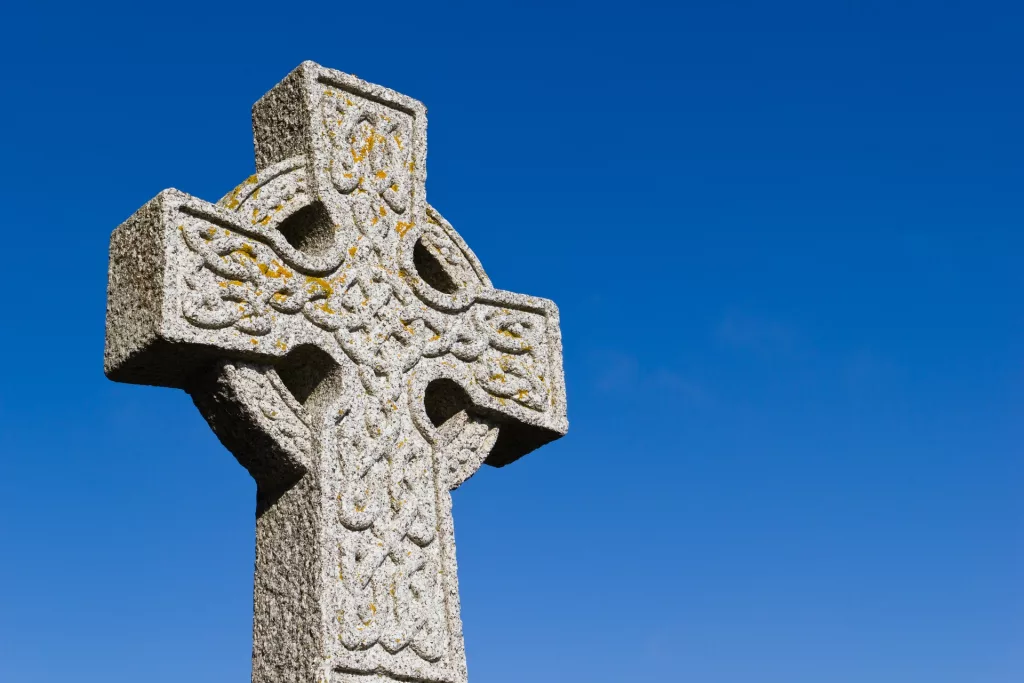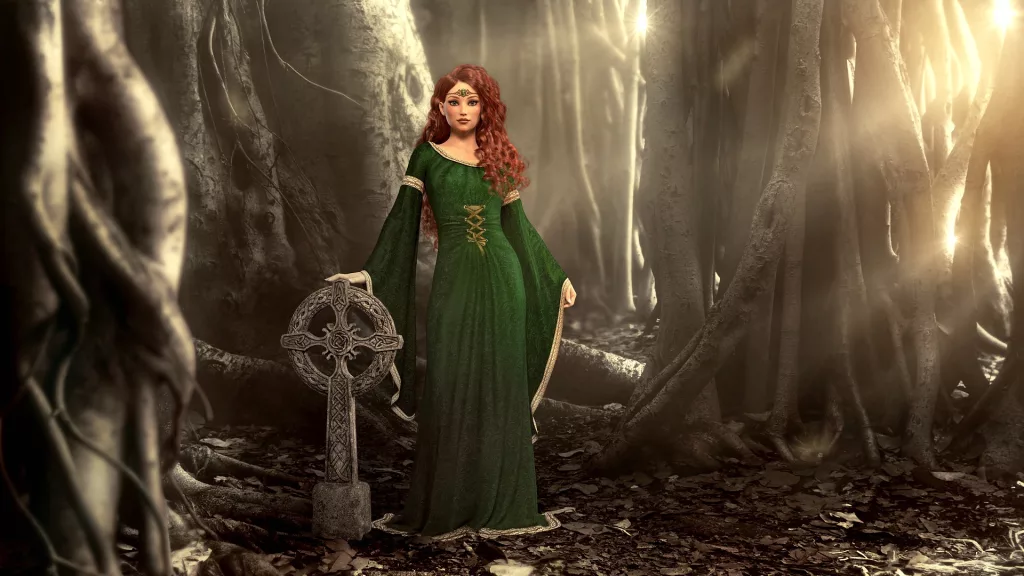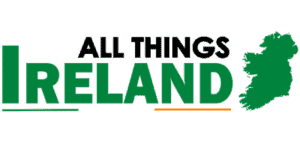
The Celtic Cross symbol, which originated in Ireland and has since become an icon of Irish culture, is widely seen as a powerful symbol that brings together the spiritual energy of the past and present. The four arms of the cross represent elements of hope, faith, love and continuity; while the circle in its centre represents eternity and our connection to divine forces.
In addition to functioning as an enduring religious symbol, the Cross is also seen as a marker of pride for many Irish people and a source of national identity. Additionally, due to its unique mix of symbols, it is often used by Celtic Mysticism practitioners in meditation practices or other spiritual practices.
This famous Cross is a centuries-old symbol steeped in both Christian and Pagan symbolism. It is a cross with a centre circle and four equal-length arms that generally intersect near the middle of the vertical line; some scholars suggest it represents the journey to spiritual enlightenment and oneness.
Though historically associated with Christianity, over time it has become a popular symbol of Celtic culture and heritage, often seen in jewellery, tattoos, or wall decor.
meaning of the symbol has been interpreted differently depending on who wears it – those who follow traditional religion may view it as a sign of faith while others may see it as representing luck or a connection to family roots. Ultimately, whatever its personal significance is for an individual, the Celtic Cross remains a long-standing tradition in many countries.
The Celtic Cross Symbol Meaning

The Celtic Cross symbol is an icon that has been around for centuries and is believed to have originated in ancient Ireland. It usually consists of a circle surrounding a cross, but the original meaning of the symbol is still largely debated today.
Some believe it was created to represent Christianity by combining elements from both pagan and Christian backgrounds, while others view it as a sign of protection against evil or a representation of rebirth after a tragedy. It can also be seen as an ode to nature, connecting the four elements – fire, air, water, and earth – with one another, signifying balance and unity.
Regardless of its initial purpose, the Celtic Cross remains an important part of many cultures’ spiritual heritage.
The Celtic Cross Symbol History

The Celtic cross is a symbol that has held cultural significance through many different eras, across various religions and nations. Its history dates back to ancient times, with its design featuring a large circle intersecting the four arms of traditional Christian crosses.
It’s speculated that this combination of the Pagan sun wheel and the Christian cross was meant to represent the bridge between Christianity and Paganism, in an effort to strengthen religious unity in England during Medieval times.
Today, it’s widely associated with Irish culture, honouring traditions rooted in both Christianity and Paganism – sometimes even serving as a symbol of national pride. As such, it holds symbolic meaning far beyond traditional religious contexts and makes for an enduring image ingrained within Celtic culture.
The Celtic Cross Symbol Different Designs

The Celtic Cross has been a symbol of spiritual strength and faith for centuries. Its distinctive circular design features a central vertical line, four arms that intersect at the centre, and a circle connecting the arms. Its distinct form is representative of the unity that comes from the combination of four crossroads and imagery associated with stellar navigation.
In some designs, each arm has details representing elements found in nature such as flowers or spirals; other versions may contain knotwork and triskelions, or abstract patterns. The symbolism associated with the Celtic Cross varies by region and culture; however, it often embodies themes such as freedom, love, spirituality, protection and luck. Regardless of its representation, this ubiquitous symbol remains a powerful testament to our rich heritage.
Celtic crosses are a type of religious symbol that dates back centuries, combining the Christian cross with traditional Celtic art, creating a powerful visual representation of one’s faith. These crosses are commonly found adorning churches, graveyards and other places of reverence and can come in a range of sizes and styles. There are four main types of Celtic Crosses; Pictish or Ringed Crosses, High Crosses (or Monastic), Market or Coarse Crosses and Slabbed or Plain Crosses.
The Pictish or Ringed Cross is the most ancient form, often seen only as outlines on carvings while others may have small figures depicting Biblical events. High Crosses (also known as Monastic) are intricately carved large stones featuring intricate knotwork designs – they generally stand tall at 6 to 10 feet in height. Market or Coarse Crosses feature initials and simple lines representing branches around the arms of the crosses which were likely made quickly for sale by itinerant masons at local markets.
Slabbed or Plain Crosses differ from other styles as no decoration is present on these simple slab stones adorned with traditional cross designs. No matter your faith, the timeless beauty of Celtic crosses continues to carry a message that is important to many.
Where Can You Find Celtic Crosses In Ireland

Due to its rich and unique history, Ireland is home to a wide variety of Celtic crosses which can be found in many places throughout the country. Some of the most prominent examples are located at Clonmacnoise in County Offaly and Monasterboice in County Louth; both sites have long been associated with monastic settlements that celebrate Ireland’s traditional culture, heritage and faith.
Other iconic Celtic crosses can also be seen in Bangor Abbey and Ireland’s medieval ecclesiastical capital, Clonfert Cathedral, while symbols of Irish history have been erected in several notable locations such as St. Patrick’s grave, Cashel Rock and Hill of Tara. With their distinctive features and intricate design work, these ancient monuments attract visitors from around the globe seeking a greater understanding of Ireland’s past.
Another renowned example of a Celtic cross is located at Reask in County Kerry. The cross features a carved ring on which the Latin alphabet appears and includes the Celtic Trinity Knot. The ridged knot is situated at the top of the cross and ornate carvings at the centre represent the Crucifixion. This example was thought to have been the site of ancient religious rituals, and some scholars suggest it was created around 800 CE.
The St. Patrick’s Cross is located at Christchurch Cathedral in Dublin and dates back to the 12th century. It is an impressive structure, standing almost twenty-eight feet high. This example showcases the Four Evangelists and is a masterful display of Celtic art, as it features intricately carved figures on each of the four arms. This cross is historically significant as it is believed to have been where St. Patrick convert the people of Ireland to Christianity.
Finally, there is the ancient and impressive Fahan Muraicus Cross, located in County Donegal. This is a remarkable example of an Iron Age Cross and stands at an impressive twenty-four feet in height, making it one of the tallest Celtic crosses in Ireland.
The carvings on this cross, thought to be from the 7th or 8th century, are strikingly detailed and fascinating to look at. It is believed to be an important site of the early Christian era but the exact details are unknown.
To conclude, there are numerous examples of remarkable and stunningly detailed Celtic crosses in Ireland. From Monasterboice to Fahan Muraicus, each cross provides a unique insight into Celtic religious and spiritual practices and offers a remarkable glimpse into a fascinating culture and time.
Check out some more of my articles below
24 Things to do and see in Limerick
Recent Posts
Unraveling the Enigma: Exploring the History and Symbolism of Celtic Knots
The Origins of Celtic KnotsThe intricate artistry of Celtic knots holds a rich history that dates back centuries to the Celtic tribes of ancient times. These ancient peoples, with their strong...
Researching Budget-Friendly Accommodation OptionsWhen planning a budget-friendly trip, one of the key aspects to consider is finding affordable accommodation. Start your search by exploring options...
